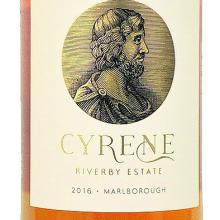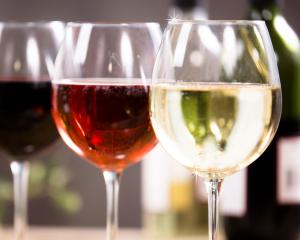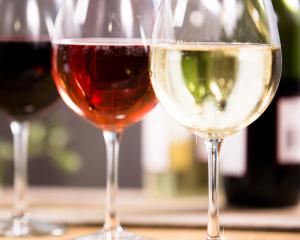

People like sweet things and scientists suggest that we humans are hard-wired to seek out sweet foods, as for our prehistoric hunter-gatherer selves sweet foods offered instant calories which could help us stay alive. Moreover, sugary foods release dopamine into the brain, creating a "sugar hit" that makes us feel good, and left wanting more of the same.
Consequently, the aisles in our supermarkets, dairies, convenience stores and the like are crammed with chocolates, sweets, cakes, ice creams etc to feed that urge. But if we like sugar that much, why are sweet wines so desperately out of fashion?
In the past, sweet wines were some of the most expensive you could buy. Subject to the vagaries of each growing season, they were rare and expensive to make and that exclusivity obviously gave them extra cachet. Perhaps it was the accessibility of refined or processed sugars that signalled their decline.
Originally derived from sugar cane or beets, our sugar hit became more and more accessible and affordable through the 1800s and into the 1900s as refined sugar became widespread. The 1950s saw the introduction of high-fructose corn syrup, which is now commonplace in processed foods, meaning that sugar is virtually everywhere.
Sweet wines, dessert or "pudding" wines, "stickies", call them what you will, take a number of forms. One method is to quite simply to arrest the fermentation: in the case of Riesling for example by chilling the fermenter, leaving the delightful interplay between the natural residual sugar and racy acidity.
Late harvest styles see the grapes held on the vine post the normal harvest so as to continue to ripen, sometimes in conjunction with the "passilerage" method where the grapes begin to shrivel and dessicate as they lose water volume, concentrating sugars and flavours.
Ice wine as made here sees the grape juice frozen in a fermenter, allowing winemakers to remove the blocks of ice and concentrating the remainder, while this happens naturally in Germany and Canada, where the grapes are left on the vine until the depths of winter; a string of sub-zero days allows the grapes to freeze into tiny marbles to a similar effect.
Passito or Vin de Paille styles see the grapes dried in the sun, or in warehouses, the evaporative effect again concentrating the juice.
The natural occurring fungus botrytis (often dubbed "noble rot") creates wine styles that most wine drinkers will be familiar with. If you've ever tried a Noble Riesling, a Sauternes, or a Hungarian Tokaj then you have tasted the result of botrytis at work. The fungus grows on the outside of ripe grapes, its microscopic roots penetrating the pores in the grape skins and sucking out the water to leave the grapes shrivelled and super concentrated, while the fungus itself adds an extra musky quality to the wine.
All these methods are a labour of love for passionate winemakers and fraught with risk. Bird or animal predation and inclement weather can all see it all turn to custard, while the volumes produced are significantly lower than a "standard" harvest, necessitating higher prices to make any sort of profit.
They are not always easy to pair with food: perhaps better as a dessert in themselves alongside fresh fruit, blue cheeses, pate, nuts, etc, yet are a marvellously decadent wine option when the mood hits you. They invariably age well, but are just as delicious in their vibrant youth. A little goes a long way, so look upon them as treat!
2014 Chateau Rieussec Sauternes 375ml Current Vintage (2018)

Price: $75-$85
Rating: Excellent to outstanding
Quite a lifted nose, marzipan, beeswax, fragrance, herb, dried pineapple, a darker, deeper undercurrent. The honeyed sweetness is there but there's wonderful freshness with a core of acidity. Vibrant, lovely energy, with a minerally note growing as it opens. Not the super lusciousness of some Sauternes, but compelling balance.
www.lafite.com
2014 Chateau Suduiraut Sauternes 375ml Current Vintage (2018)

Rating: Outstanding
Toasted almonds, a biscuity note, dry honey, grilled tropical fruits, beguiling. Marvellously rich & intense with marzipan, musk, apricot, toffee apple, a long wisp of spearmint adding fresh lift. Delightful balance and integration, incredible depth with an endless finish. Sumptuous and simply superb already but will shine in the cellar too.
www.suduiraut.com
2016 Riverby Estate Cyrene (Marlborough Noble Semillon Sauvignon) 375ml

Rating: Excellent
Golden syrup, toffee, toffee apple, honey, grilled citrus, initially sweet. The palate adds spices and musk, a smoky core too, with a bittersweet element adding contrast. This really comes into its own with aeration as citrussy notes of lemon and burnt orange are joined by a line of racy acidity, giving this lovely freshness. Grows very nicely.
www.riverbyestate.com
Seasons - By Alison Lambert - Available for purchase now!

The Otago Daily Times and Alison have collaborated to bring you her first cookbook – Seasons.
This book is the ultimate year-round cookbook. Seasons is filled with versatile recipes designed to inspire creativity in the kitchen, offering plenty of ideas for delicious accompaniments and standout dishes that highlight the best of what each season has to offer.
$49.99 each. Purchase here.
$44.99 for ODT subscribers. Get your discount code here.





